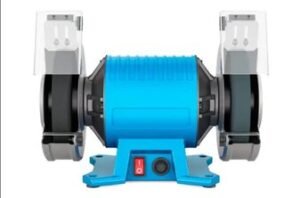what is deviceurl for vex brain nodejs
n the evolving landscape of robotics education and development, VEX Robotics stands out as a prominent platform, offering versatile hardware and software solutions. A significant advancement in this domain is the integration of Node.js with the VEX Brain, facilitated by the DeviceURL library. This integration empowers developers to harness the full potential of VEX robots through efficient and scalable programming.VEX Library+5Temple Publications+5Temple Publications+5
Understanding VEX Robotics and Node.js Integration
VEX Robotics provides a modular ecosystem comprising the VEX Brain, sensors, motors, and controllers, all designed to work seamlessly together. Traditionally, programming these components involved using proprietary environments like VEXcode. However, the advent of Node.js, a JavaScript runtime known for its asynchronous event-driven architecture, has opened new avenues for controlling VEX robots.VEX Library+4Temple Publications+4serpwizard.com+4
Node.js’s non-blocking I/O operations make it particularly suitable for robotics applications, where real-time data processing and control are crucial. By leveraging Node.js, developers can create applications that interact with the VEX Brain, enabling functionalities such as motor control, sensor data acquisition, and real-time feedback systems.
What is DeviceURL?
DeviceURL is a Node.js library specifically designed to interface with the VEX Brain. It provides a set of APIs that facilitate communication between Node.js applications and the VEX Brain, allowing for the control and monitoring of connected devices.https://www.geniussclick.com/
The primary functions of DeviceURL include:
-
Device Discovery: Automatically detects connected VEX devices, simplifying the setup process.
-
Real-Time Communication: Enables bidirectional communication between the Node.js application and the VEX Brain.
-
Event Handling: Supports event-driven programming, allowing applications to respond to changes in sensor data or actuator states.
-
Data Streaming: Facilitates continuous data streams from sensors, which is essential for real-time monitoring and control.
By abstracting the complexities of hardware communication, DeviceURL allows developers to focus on building high-level functionalities and applications.
Setting Up DeviceURL with VEX Brain
To integrate DeviceURL with the VEX Brain using Node.js, follow these steps:
-
Install Node.js: Ensure that Node.js is installed on your development machine. You can download it from the official website.
-
Install DeviceURL Library: Use npm (Node Package Manager) to install the DeviceURL library:https://www.geniussclick.com/
3. Connect VEX Brain: Physically connect the VEX Brain to your computer via USB.
4. Initialize DeviceURL in Your Application: In your Node.js application, require the DeviceURL library and initialize the VEX Brain:https://www.geniussclick.com/
This code sets motor A to 50% velocity and spins it forward.
Advanced Features and Capabilities
Beyond basic control, DeviceURL offers advanced features that enhance the capabilities of VEX robots:https://www.geniussclick.com/
-
Custom Device Profiles: Developers can create custom device profiles by extending the Device class, allowing for tailored behavior and attributes specific to custom hardware components.
-
Asynchronous Programming: Leveraging Node.js’s asynchronous nature, DeviceURL supports non-blocking operations, enabling efficient handling of multiple devices and tasks concurrently.
-
WebSocket Integration: DeviceURL can be configured to communicate over WebSockets, facilitating remote control and monitoring of VEX robots via web interfaces.
-
Error Handling and Debugging: The library includes built-in error handling mechanisms and debugging tools, aiding developers in identifying and resolving issues during development.https://www.geniussclick.com/
Use Cases and Applications
The integration of DeviceURL with Node.js opens up a plethora of possibilities for VEX Robotics applications:
-
Educational Tools: Create interactive learning platforms that teach programming and robotics concepts using real-world hardware.
-
Autonomous Systems: Develop autonomous robots capable of performing tasks such as object detection, path planning, and decision-making.
-
Remote Monitoring: Implement systems that allow for the remote monitoring and control of robots, useful in scenarios like competitions or remote research.
-
Data Logging and Analysis: Collect and analyze sensor data over time to gain insights into robot performance and behavior.Challenges and Considerations
While DeviceURL provides powerful tools for VEX Brain integration, developers should be aware of certain challenges:
-
Compatibility: Ensure that the VEX Brain’s firmware is up to date to avoid compatibility issues with the DeviceURL library.
-
Network Configuration: When using WebSocket communication, proper network configuration is essential to establish stable connections.
-
Resource Management: Managing resources efficiently is crucial, especially when dealing with multiple devices or complex tasks, to prevent performance bottlenecks.https://www.geniussclick.com/
Conclusion
The DeviceURL library for VEX Brain and Node.js represents a significant advancement in robotics programming, offering developers a flexible and efficient means to control and monitor VEX robots. By combining the power of Node.js with the versatility of VEX Robotics, this integration paves the way for innovative applications in education, research, and beyond. As the robotics field continues to evolve, tools like DeviceURL will play a pivotal role in shaping the future of robotic development







![Swimsuit Edition [Abbb] - 1.20 21 Swimsuit Edition - Chapter](https://www.geniussclick.com/wp-content/uploads/2025/07/rsz_swimsuit_edition_abbb_-_120_21_swimsuit_edition_-_chapter-300x199.jpg)





Post Comment